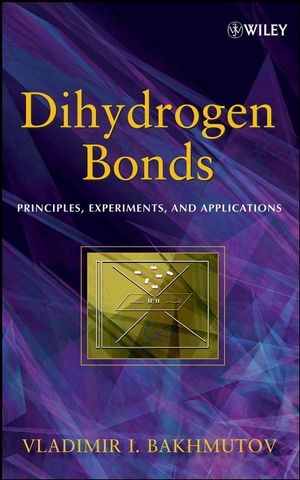Dihydrogen Bond: Principles, Experiments, and ApplicationsISBN: 978-0-470-18096-9
Hardcover
256 pages
March 2008
 |
||||||
The definitive, up-to-date resource on dihydrogen bonds
This unique reference consolidates current knowledge about dihydrogen bonding, emphasizing its role in organizing interactions in different chemical reactions and molecular aggregations. After an enlightening introduction and overview, Dihydrogen Bonds: Principles, Experiments, and Applications systematically:
*
Analyzes the similarities and differences between dihydrogen bonds, classical hydrogen bonds, and covalent bonds
*
Describes dihydrogen bonds as intermediates in intramolecular and intermolecular proton transfer reactions
*
Describes the phenomenon of dihydrogen bonding in the solid-state, the gas phase, and in solution while considering numerous theoretical and experimental methodologies for its determination and characterization
*
Progressively systematizes intramolecular and intermolecular dihydrogen bonds from very weak (C-H...H-C) to very strong (M-H...H-X), demonstrating how to practically distinguish dihydrogen bonding from simple dipole-dipole attraction
*
Illustrates the effects of proton-hydride interactions on molecular structure and intermolecular aggregations important for supramolecular chemistry and crystal engineering
*
Includes experimental and theoretical approaches to investigations
This is the premier reference for physical chemists, biochemists, biophysicists,and chemical engineers. It is an invaluable resource for scientists working in the areas of materials, supramolecular structures, self-assembly, hydrogenstorage, acid catalysis, and homogeneous hydrogenation, catalyzed by transition metal complexes.
This unique reference consolidates current knowledge about dihydrogen bonding, emphasizing its role in organizing interactions in different chemical reactions and molecular aggregations. After an enlightening introduction and overview, Dihydrogen Bonds: Principles, Experiments, and Applications systematically:
*
Analyzes the similarities and differences between dihydrogen bonds, classical hydrogen bonds, and covalent bonds
*
Describes dihydrogen bonds as intermediates in intramolecular and intermolecular proton transfer reactions
*
Describes the phenomenon of dihydrogen bonding in the solid-state, the gas phase, and in solution while considering numerous theoretical and experimental methodologies for its determination and characterization
*
Progressively systematizes intramolecular and intermolecular dihydrogen bonds from very weak (C-H...H-C) to very strong (M-H...H-X), demonstrating how to practically distinguish dihydrogen bonding from simple dipole-dipole attraction
*
Illustrates the effects of proton-hydride interactions on molecular structure and intermolecular aggregations important for supramolecular chemistry and crystal engineering
*
Includes experimental and theoretical approaches to investigations
This is the premier reference for physical chemists, biochemists, biophysicists,and chemical engineers. It is an invaluable resource for scientists working in the areas of materials, supramolecular structures, self-assembly, hydrogenstorage, acid catalysis, and homogeneous hydrogenation, catalyzed by transition metal complexes.



